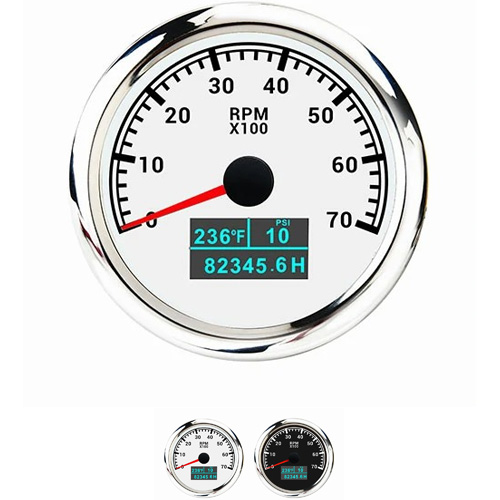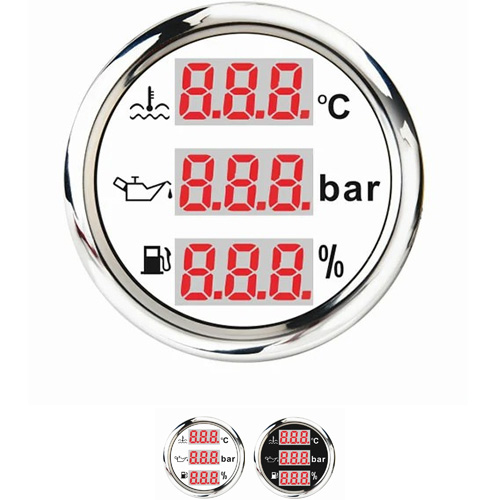yamaha boat gauge replacement
If the yamaha boat's instrument gauge does not work, you can check the problem and replace it. First, check whether the wiring of the sensor is intact. If it is in good condition, disconnect the wiring of the sensor and use a multimeter to check whether the wiring of the sensor is energized. If there is no electricity, check the circuit from the sensor to the instrument and battery . If there is electricity, take the fuel gauge as an example. Use of test method 10 ω Resistance replaces sensor. One end is connected to the wiring of the sensor, and the other end is directly grounded. Turn on the ignition switch and observe the instrument. If the pointer swings, the sensor is faulty and needs to be replaced.
Please refer to the yamaha maintenance manual for the accurate working conditions of the instrument. Take the yamaha boat fuel gauge of a ship for example, use a rheostat instead of a sensor. When the resistance value is 40 ω When the pointer indicates "1"; When the resistance value is 78 ω When the pointer indicates "1/2"; When the resistance value is 283 ω When, the pointer indicates "0". If the test result is consistent with the above, the sensor is faulty and should be replaced. Otherwise, the instrument is faulty and should be replaced.
How to diagnose and troubleshoot two or more instruments in the fuel gauge, coolant thermometer and oil pressure gauge? When two or more instruments do not work at the same time, check the instrument fuse and power regulator. If the instrument fuse is normal, check the power regulator. Take the ship as an example, measure the voltage between the output terminal 3 and the grounding terminal 2. The voltmeter reading should be between 9.75 and 10.25 volts, otherwise, replace the voltage regulator. Measure the voltage between input terminal 1 and ground terminal 2. The voltmeter should read the supply voltage, otherwise, repair the circuit.
If the CAN bus of the ECU fails, the CAN interface of the ECU is in poor contact. Excessive dirt and carbon deposit, abnormal air flow, and inability to accurately control the normal intake air volume lead to unstable gas content, making the engine unable to work well. Low fuel pressure and poor constant pressure performance lead to low atomization level of the system, which makes it difficult to start the boat .
 English
English 



Get a Quote / Info